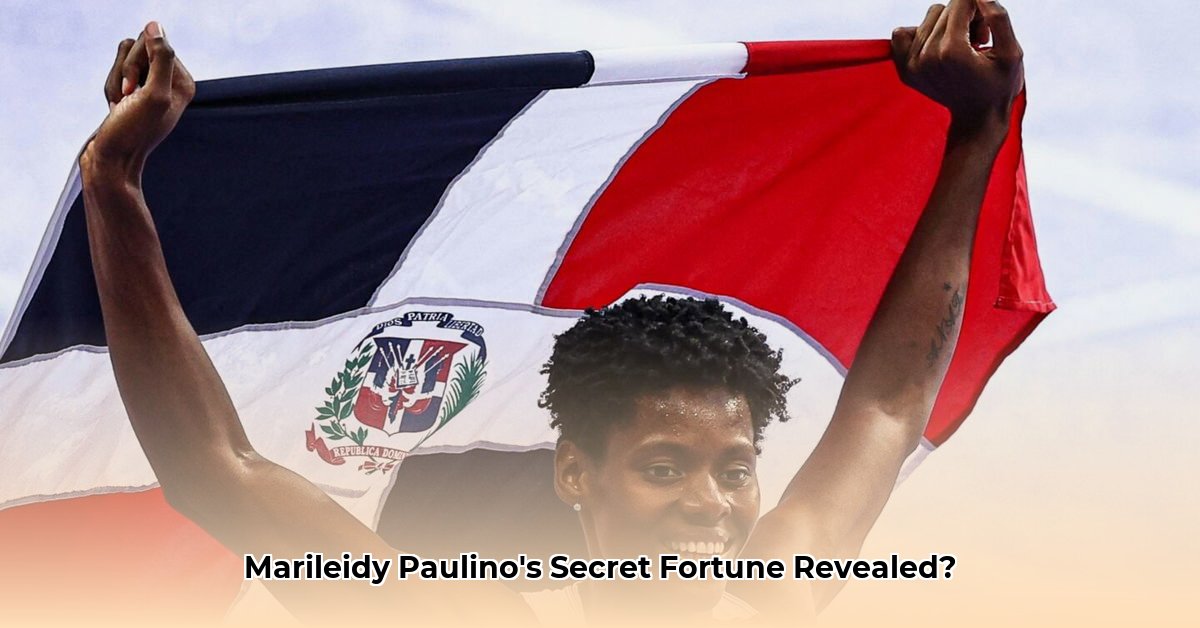
Marileidy Paulino's Financial Journey: A Look Beyond the Numbers
Determining the precise net worth of any athlete, especially one like Marileidy Paulino, is challenging due to the private nature of financial information. While we can't provide a definitive figure, exploring the financial realities of women's track and field illuminates the complexities of Paulino's situation and the broader challenges faced by female athletes. This article delves into her potential earnings, compares them to other elite runners, and examines the systemic issues that affect financial stability in the sport.
The Financial Landscape of Women's Track and Field: A Complex Terrain
The financial landscape for female track athletes varies significantly. While high-profile athletes like Faith Kipyegon secure lucrative sponsorships, many others struggle to achieve financial security. This disparity stems from several factors: the relative lack of prize money compared to their male counterparts in some events, inconsistent sponsorship deals, and unequal investment in women's track and field from national federations globally. The emergence of events like Athlos NYC, with substantial prize purses, provides a beacon of hope, but broader change is urgently needed. How can we ensure fair compensation and consistent opportunities for all talented female athletes?
Marileidy Paulino's Career and Earnings: A Rising Star's Financial Trajectory
Marileidy Paulino's impressive achievements have undoubtedly earned her prize money from various competitions and likely sponsorships from brands eager to align themselves with her success. However, the exact figures remain undisclosed, a common pattern in professional athletics. Her earnings are influenced by several factors: her specialization in sprint events (generally more lucrative), her international success, and the sponsorship landscape within the Dominican Republic. While we lack precise numbers, her success points to a likely significant income stream, though it's unclear how this compares to athletes in other countries with more robust sponsorship markets.
Comparing Marileidy Paulino's Earnings to Other Athletes: A Global Perspective
Direct comparisons with other elite female track athletes, such as Faith Kipyegon, are difficult due to the private nature of financial information. However, it's clear that athletes in wealthier nations and those who excel in highly marketable events often have access to substantially more lucrative sponsorship deals. Athletes with strong global brand recognition and substantial social media followings can often command higher fees. But even within the realm of top-tier athletes, there's a significant gap, highlighting the need for a more equitable distribution of prize money and sponsorship opportunities.
Challenges and Future Prospects: A Race Toward Fairer Compensation
The challenges facing women in track and field extend beyond prize money and sponsorships. Securing equitable pay, long-term contracts, and better access to resources remain crucial. Increased transparency in athlete contracts, fairer distribution of prize money, and greater investment from sponsors and governing bodies are essential steps toward a more level playing field. While events like Athlos NYC demonstrate a potential path towards greater financial rewards, a widespread shift in the financial landscape is necessary to propel the careers of female athletes to their full potential.
Conclusion: A Call for Transparency and Equity
Determining Marileidy Paulino’s net worth precisely isn't possible without access to private financial information. However, analyzing her financial situation within the context of women's track and field reveals significant systemic issues. The lack of transparency around athlete compensation, the uneven distribution of sponsorship opportunities, and the discrepancies in prize money highlight the urgent need for reform. Greater transparency, equitable compensation, and improved support systems are crucial for ensuring a sustainable and successful future for all female athletes, empowering them to pursue their passion without facing undue financial burdens. The path toward a more just and financially secure future for women in the sport requires collective action.